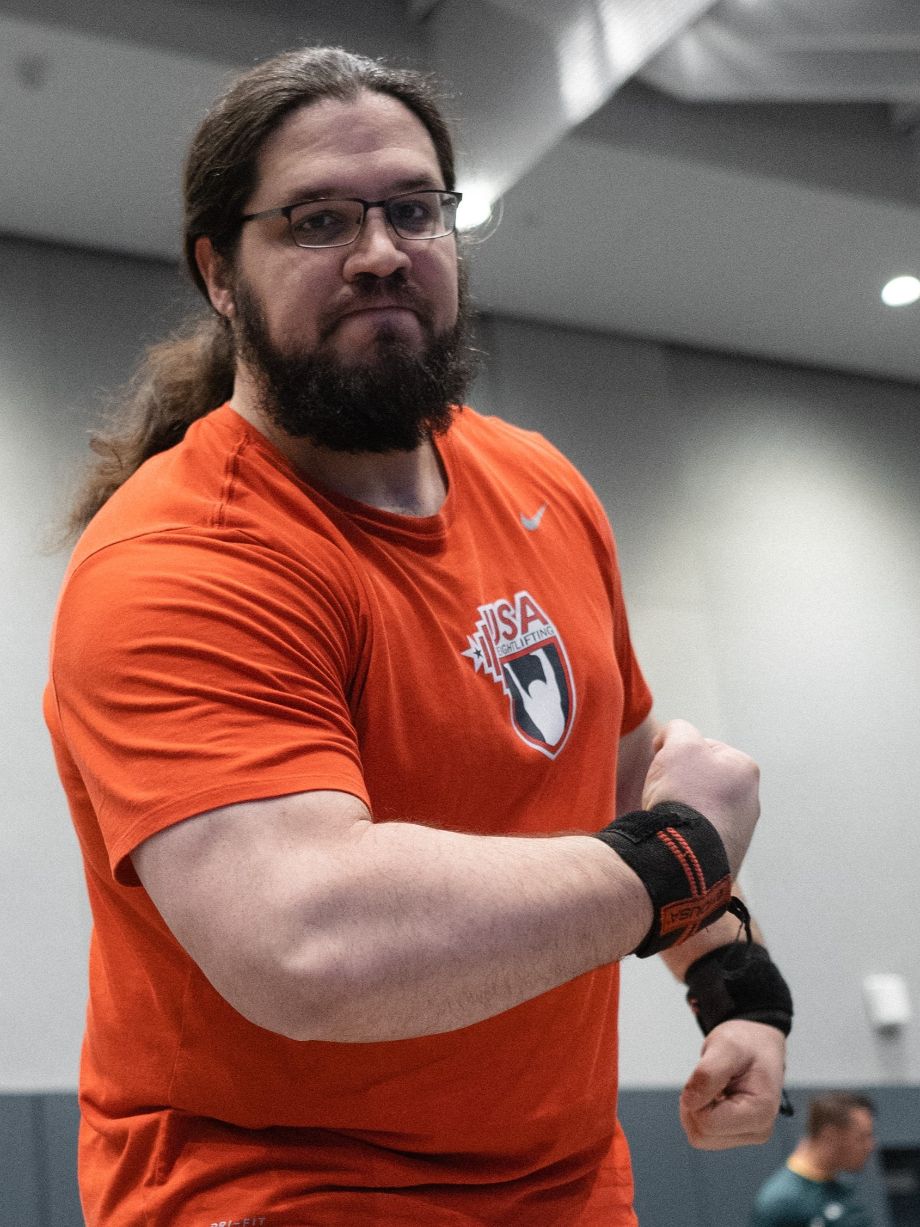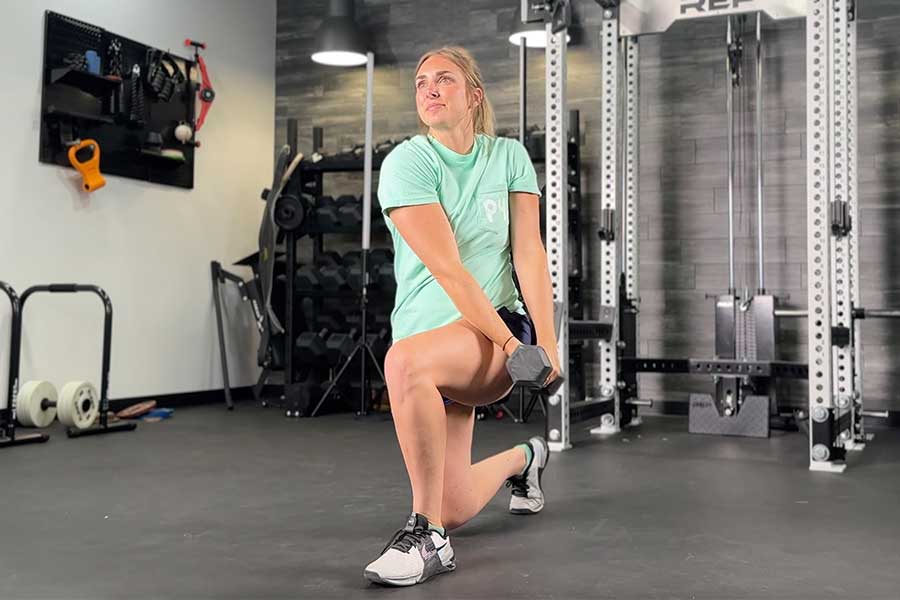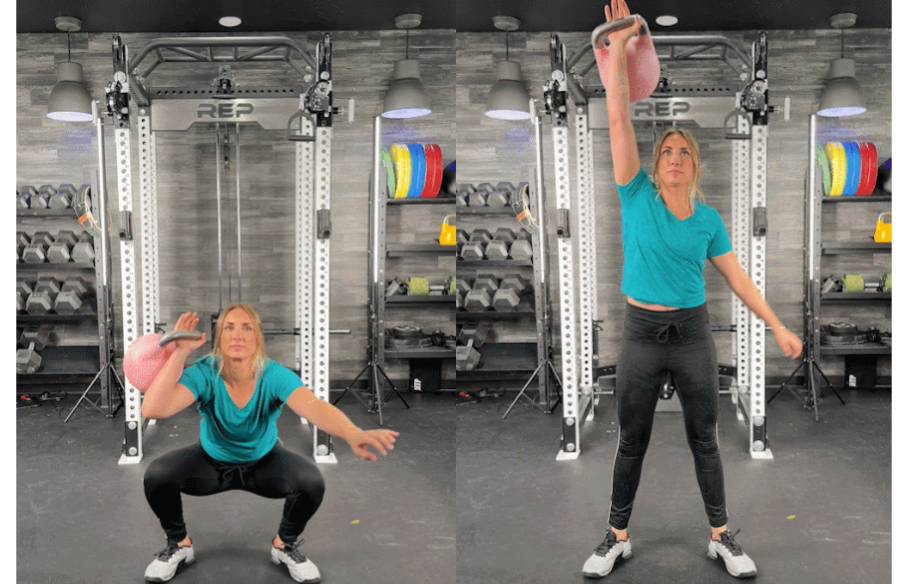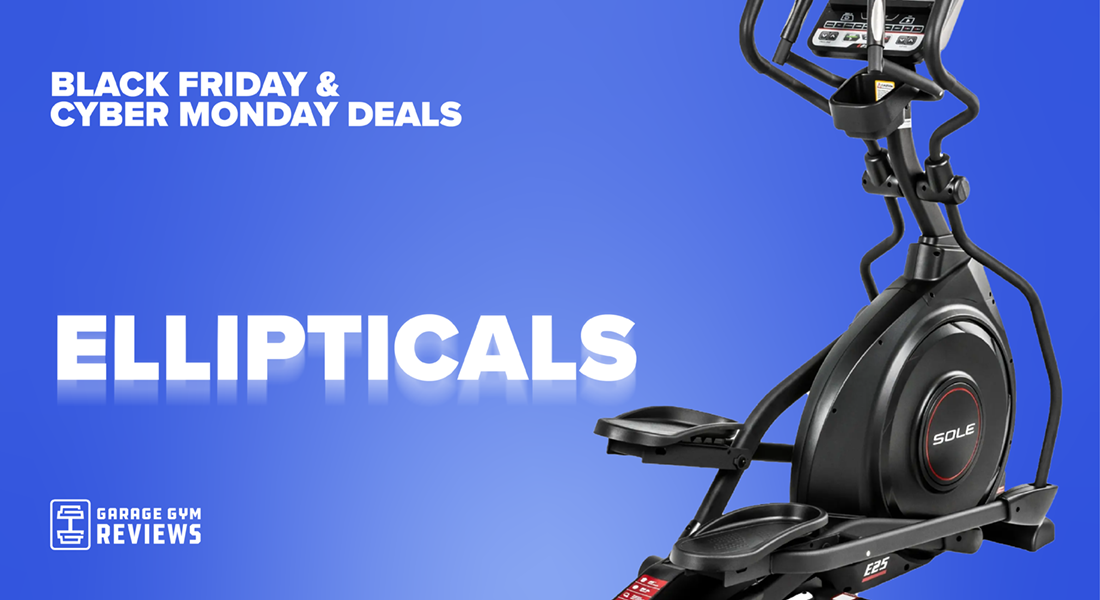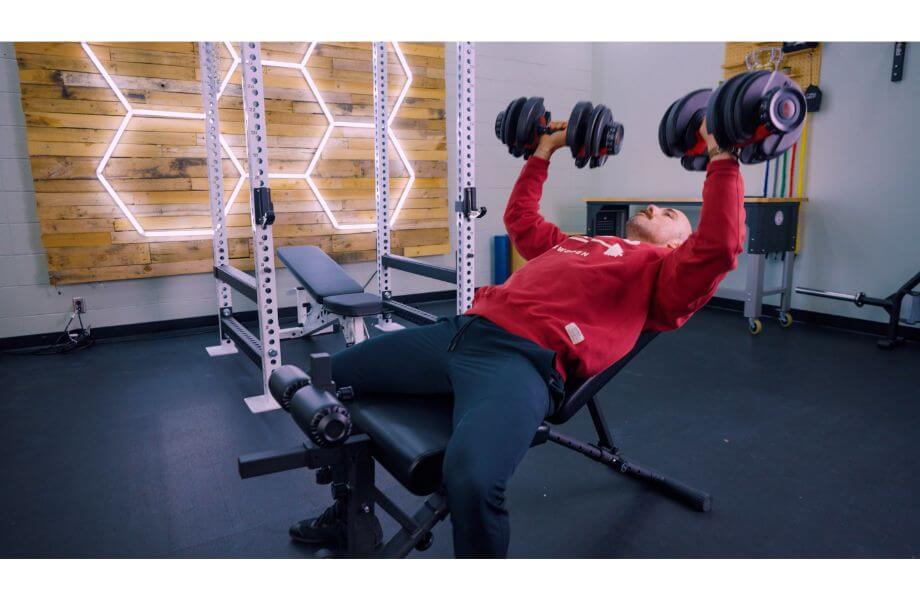Squats are one of the most important exercises in my training. Competing in the snatch and clean & jerk, I need a solid foundation of strength, particularly in the legs. That makes squatting crucial in my training—not only doing them, but also in constantly improving and getting stronger.
Squatting isn’t crucial only in competition, but it can be crucial in life as well. Squatting will help improve your quality of life by keeping you active. Squats are functional, meaning they mimic everyday life, so a strong squat means being able to lift things in life easily and with a low risk of injury. In addition, a study from 20091 demonstrated that people with more muscle mass had less of a chance of developing cancer.
In my two decades of Olympic weightlifting, I’ve learned a multitude of tips and cues on how to squat heavier, building my own squat to over 660 pounds. In this article, I’ll go over these tips with you to help you build stronger glutes, hamstrings, and quads to get you moving some heavy squats. Whether your goal is just muscle growth, or to squat elite numbers, this advice can help you accomplish those goals.
Proper Programming
Every workout that you do in the gym should be devoted to your goal. If a bigger squat is the goal, then you should have your entire workout schedule revolving around that major goal. Here are some things to consider in your programming:
Progressive Overload
The concept of progressive overload is a fairly standard concept in most training programs. Most people probably train this way without even realizing it. Progressive overload is the idea to gradually increase the weight or reps or frequency in your training regimen.
Here’s an example that was common in my training, typically during a hypertrophy cycle: I would squat twice a week. On day one, I would squat 5 sets of 6 reps, at a challenging but manageable weight. The second day would be 10 reps at a time at a much lighter weight. The next week I would push the 5×6 up in weight some, usually no more than a 5-percent increase, and keep the weight the same on the 10s. Over the next four weeks, I would try to build up my sets of 6 reps in squats, usually followed by a deload week, of far less volume and intensity.
Periodization
A deload week is an example of periodization. The purpose of periodization is to adjust the weights, reps, or volume of a program to avoid overtraining, as well as maximize the strength gains you are working for. In a smaller training cycle, a deload week alters the training. In a longer training cycle, however, periodization comes from the adjusted goals in smaller blocks of training.
Typically, we have phases working on laying a foundation with reps and less focus on heavy loads, and progress to lower rep counts and heavier loads, all the way to training for a one-rep max. A study from 20232 showed that periodized training has a greater positive effect on an athlete’s training for a one-rep max than non-periodized training would.
There’s much more to periodization than I can cover here, but a basic knowledge can go a long way in your training. If you are still a novice in strength training, I would recommend talking to a coach or trainer about your training regimen, though.
Add Variety
In order to better your squat, you need to squat. However, if you were to only squat, you’d quickly get overtrained, leading to soreness, overuse injury, and mental fatigue. So it’s important to add variety into your program. In its simplest form, varying rep counts and intensities helps. But you can also change the squat variation, or how you are adding a load or resistance. Instead of using only a barbell to squat, you can use other equipment, like kettlebells or dumbbells.
All of your program should lead to improving your squat, but not every exercise has to be a squat. Strengthen your legs with a deadlift as well. Use bent over rows to strengthen the upper back. Lunges will get in some unilateral training for the posterior chain. There are many ways to build a solid foundation to improve your squat; make sure to add some variety to your program.
Track Your Progress
Now that you have a good program, what should you do? Track your progress! I’ve always seen greater benefit from keeping a workout log; it keeps quantifiable data that helps you make decisions about your training. If numbers are trending upward, it looks like you are doing something right; if they are not, then it might be time to look at what you can improve. As a competitive athlete for over 20 years, I have had times in training where I kept a workout log, and times where I didn’t. I can honestly say, some of my best training cycles were done while I was recording my workouts. Seeing progress on paper helps motivate me, and it could for you, too!
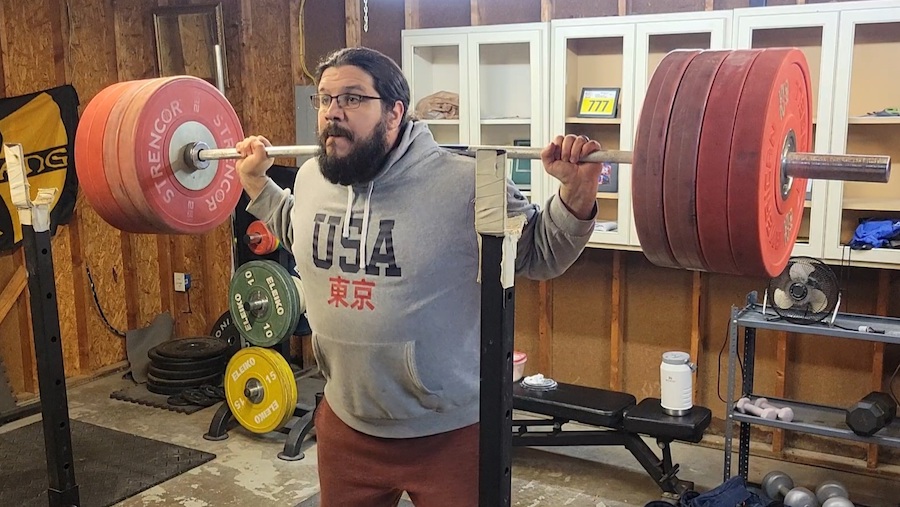
Hone The Technique
Most gym-goers who have dabbled in strength training have a good understanding of proper form on squatting, but even then, it’s good to revisit and hone your technique. A little shift or improvement can go a long way.
Starting Stance
We want to start any squat—whether a back squat, front squat, or a kettlebell goblet squat—at about shoulder-width with the feet, or just outside of it. Turn the toes out slightly, so you can let the knees track out a bit during the squat. This can be based on personal preference, so experiment with a slightly wider or narrower stance, and with how much or how little you want to adjust your toes.
The most important thing in preparing for the squat is bracing. One of the most common faults I see in a squat is relaxing the core or back as the lifter squats down; a great way to combat this is to make sure you are bracing at the start, and to maintain it throughout the lift. To brace properly, tighten the abdominal muscles while also engaging the posterior chain: glutes, hamstrings and lower back. Also, pinch the shoulder blades back and lats down to engage the upper back.
During the Squat
As said before, keep tight and stay braced throughout the entire movement. In addition, remember to stay balanced on your feet during your descent, and to drive through the heels and mid-foot coming out of the squat. Shifting too far forward to the toes can shift your balance and force you to rely on your quads instead of all of your leg muscles. Using all your legs will produce more drive and power out of the bottom of a squat.
High Bar vs Low Bar Back Squats
In weightlifting, I’ve used a high bar squat position for my barbell back squats. It keeps you more upright throughout the squat, which carries over to the Olympic lifts very well. By contrast, powerlifters tend to use a low bar position, which leans the chest more forward.
Each has its pros and cons. Low bar squats tend to put most of the weight on the hips, whereas a high bar squat puts stress on the knees.
To build up to heavy weights in your squat, you can test out which position works best for you. I prefer high bar because of its similarity to the Olympic lifts, and because of the greater range of motion you can achieve in that position. However, others like the low bar for the stress it takes away from the knees; plus it can put some in a stronger position. Give them each a try and see which one you prefer.
Work On Mobility
Another aspect to improve your squat is working on your overall mobility. There are many moving parts to a squat, but the major problem areas to consider are hip and ankle mobility. Better mobility will mean better squat form, and better squat form will mean better squat strength.
Squat Deep
One of the best things to improve your squat is to improve your squat depth. A deep squat utilizes more muscles for longer, which will help build muscle and gain strength. A study from 20123 showed that training with a deeper squat required more muscular effort3, helping the athlete get the most out of his squat.
How deep should you aim for? I typically tell my athletes to squat down as low as you can, while maintaining good form. The ultimate goal is to squat below parallel, but you don’t want to loosen your back or core to do it.
If you are a beginner in squatting, it would be wise to keep the weight light until you learn to squat with a full range of motion. Even if it isn’t your first time, never be too proud to lower the weight to improve your range and form. Although this is an article about how to squat heavier, sometimes you have to lighten the load to build the strength to eventually lift those heavier loads.
Hip Mobility
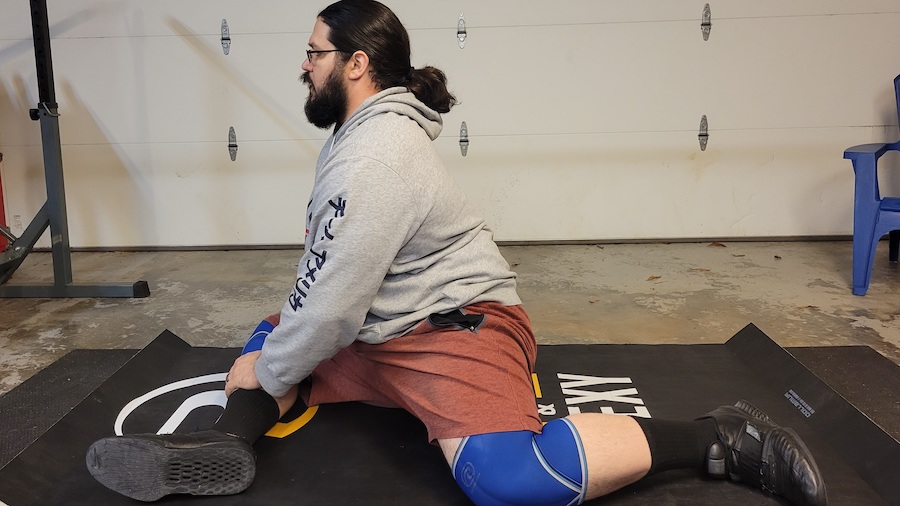
The hips and low back are big problem areas when it comes to mobility issues. Tight hips can limit your depth, or round your back in the bottom of a squat. I like to use a modified pigeon stretch for my hips, sitting on the floor with one leg laying in front of me bent at 90 degrees, and the other leg bent to the side and back also at 90 degrees. Along with this, you can do a couch stretch to attack a tight hip flexor. Finally, I will use monster walks with a hip circle to work on hip and glute activation. You can also use a foam roller to help loosen up muscles in your lower body.
Ankle Mobility
Tight or weak ankles can lead to wanting to raise the heels in the squat, compromising what could be a strong position in your squat. A simple way to work on this is to take a lacrosse ball or foam roller to roll out the calf and ankle muscles and tendons.
Additionally, I like to stretch my Achilles tendon out a bit in my warm-up with a forward lunge, where I try to keep the back leg’s heel down. This won’t be a deep lunge, but if you have a tight ankle, you won’t need much depth to feel a good stretch!
Strengthen The Core
If you find yourself failing a one-rep max because your back folds, it more than likely means you need to strengthen your core. Although a squat is a leg exercise, your entire body strength is used to support any load during the movement. This means the upper body and back strength need to be just as strong, if not stronger.
It’s important to keep the upper back strong, so add some variety to your program to train these areas: pull-ups and pull-downs for your lats, jackknives for the abdominal muscles, or Romanian deadlifts for a strong posterior chain. Maintaining a strong core can be monumental in your next heavy day.
Rest & Recovery
There are aspects outside of training that can pay dividends to your strength. Always make sure you are doing what you can to maximize recovery outside of the gym.
Eat
I’m no nutritionist, so I won’t tell you how to eat. With that said, one of the biggest mistakes I see from gym-goers as they try to strength train is not eating enough. So my biggest advice here is to make sure you are eating enough. Stay fueled for your workouts and your workouts will yield greater results.
Supplements
I’ve never been one to take lots of supplements, and if you are eating properly, you don’t really need them. But a couple that I have taken fairly consistently are fish oils and a multivitamin.
FIsh oils can support joint health4, which is important to keep healthy joints while training squats. A multivitamin is a fantastic way to make sure you are getting all the vitamins and minerals you need daily.
Sleep
Sleep is probably the most important aspect of recovery, and yet so many people rarely think about it. While we sleep, we build and repair muscle tissue, making us incrementally stronger each day. Getting enough sleep ensures we go through our sleep cycle properly and get the most of each training session.
Proper Shoes
Sometimes, a new shoe can be a quick fix for you in your squat. Switching from a sneaker to a weightlifting shoe, or “lifter,” can cause immediate improvement in any sort of squat.
How? A good lifting shoe will have a solid base and foundation, made with dense plastic or wood, leaving no room to wobble. In addition, lifting shoes often have a raised heel in the wooden sole, which helps shift people into a better, more upright squat. Furthermore, a good lifter will be tight enough around the foot to prevent slipping or sliding around in the shoe.
If you haven’t yet, get yourself a nice pair of lifting shoes; it really does make a world of difference.
Get Hyped
How hyped you want to get is up to you. But it’s not a bad idea to get pumped up for your next big lift. Getting excited or hyped for a heavy set has actually been shown to help with strength output, according to a 2011 study5. Athletes who grunted or shouted produced considerably more power in their lifts.
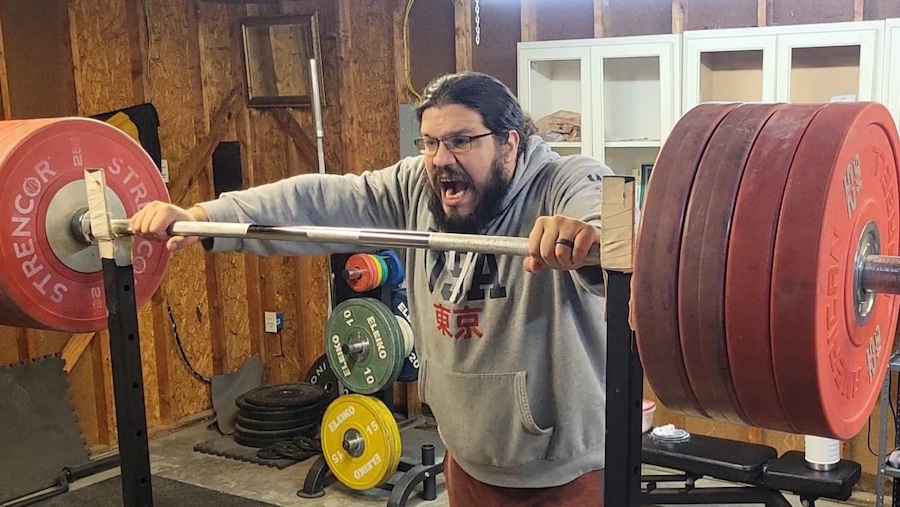
You can have your own ritual before a big lift. I like to shout before a max attempt, as it helps me focus. Some lifters will stomp their feet as they approach the bar. Still others will have a whole routine set up that must be performed before every lift. Whatever helps you get amped, go ahead and do it!
Final Thoughts on How to Lift Heavier
There are several things to consider when looking for ways to improve your squat. Find a training program that progressively builds you to heavier loads. Take a look at how you squat; do you need to adjust your technique, mobility, or build core strength? Finally, things outside of the actual squat can have an impact on your strength: your recovery, your focus on the lift, and even your shoes can have a major impact.
If you are trying to squat heavier weights, try these tips out. Some of these athlete tips may require you to lighten the load some, to work on things like technique and depth. But remember, fine tuning your squat at a lighter weight today will allow for bigger weights tomorrow! It will help build your squat on a solid foundation.
How to Squat Heavier: Q&A
How do I make my squat heavier?
There are many things to consider when building a heavier squat. I would look at the following to see what can be improved:
-Adding progressive overload and periodization to your program
-Checking your squat form
-Squatting deep and working on mobility
-Strengthening the core and upper back to brace better
-Resting and recovering properly
-Getting amped or hyped
Is it better to squat heavy or deep?
It is better to squat deep, as a greater range of motion will get the most out of your muscles and effort. Remember that if you are not a deep squatter, it will take a bit of time and learning to squat deeper with proper form, so lighten up the weight at first to build the habit before adding more weights.
Why do I struggle to squat heavy?
You can struggle to squat for a multitude of reasons. Typically, heavier squats will make faults show and be more prevalent. So, examine where your form is breaking down and make adjustments. If you find yourself raising your heels off the ground, you probably need to work on mobility, particularly in the ankles. If it’s easy for you to fold forward under heavy loads, some time should be taken on building a strong core.
References:
- Ruiz JR, Sui X, Lobelo F, Lee DC, Morrow JR Jr, Jackson AW, Hébert JR, Matthews CE, Sjöström M, Blair SN. Muscular strength and adiposity as predictors of adulthood cancer mortality in men. Cancer Epidemiol Biomarkers Prev. 2009 May;18(5):1468-76. doi: 10.1158/1055-9965.EPI-08-1075. Epub 2009 Apr 14. PMID: 19366909; PMCID: PMC3762582.
- Moesgaard L, Beck MM, Christiansen L, Aagaard P, Lundbye-Jensen J. Effects of Periodization on Strength and Muscle Hypertrophy in Volume-Equated Resistance Training Programs: A Systematic Review and Meta-analysis. Sports Med. 2023 Jul;52(7):1647-1666. doi: 10.1007/s40279-021-01636-1. Epub 2023 Jan 19. PMID: 35044672.
- Bryanton MA, Kennedy MD, Carey JP, Chiu LZ. Effect of squat depth and barbell load on relative muscular effort in squatting. J Strength Cond Res. 2012 Oct;26(10):2820-8. doi: 10.1519/JSC.0b013e31826791a7. PMID: 22797000.
- Kuszewski JC, Wong RHX, Howe PRC. Fish oil supplementation reduces osteoarthritis-specific pain in older adults with overweight/obesity. Rheumatol Adv Pract. 2020 Jul 23;4(2):rkaa036. doi: 10.1093/rap/rkaa036. PMID: 32968708; PMCID: PMC7494084.
- Argus CK, Gill ND, Keogh JW, Hopkins WG. Acute effects of verbal feedback on upper-body performance in elite athletes. J Strength Cond Res. 2011 Dec;25(12):3282-7. doi: 10.1519/JSC.0b013e3182133b8c. PMID: 22076083.


